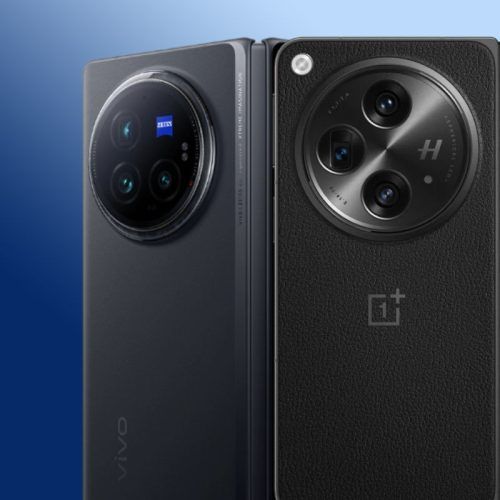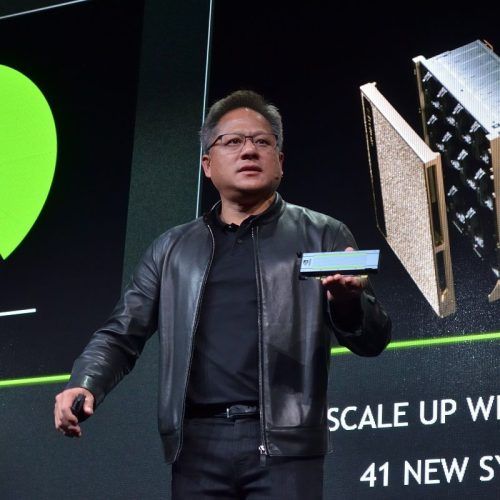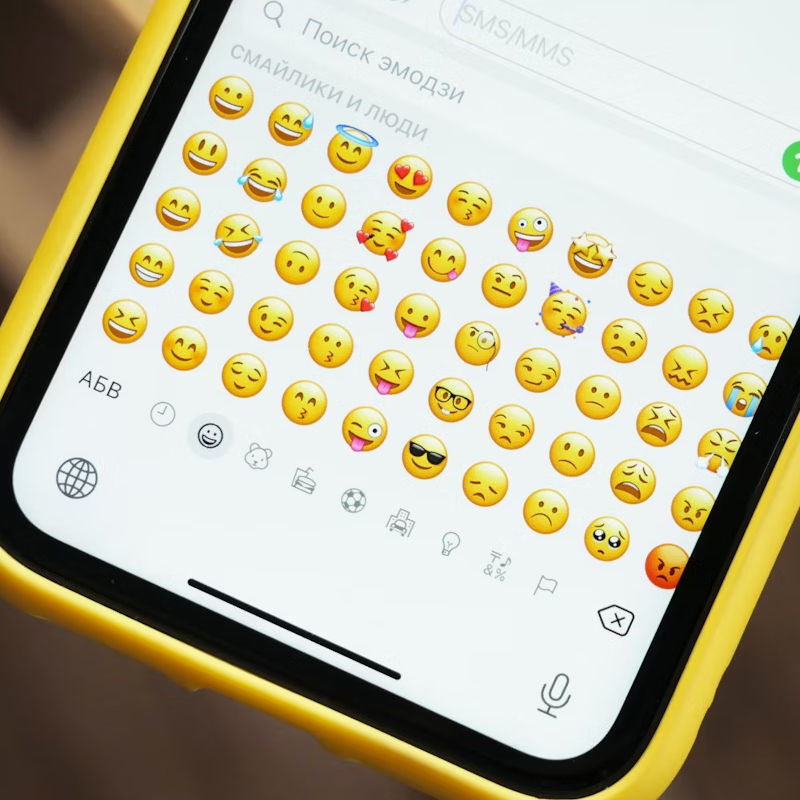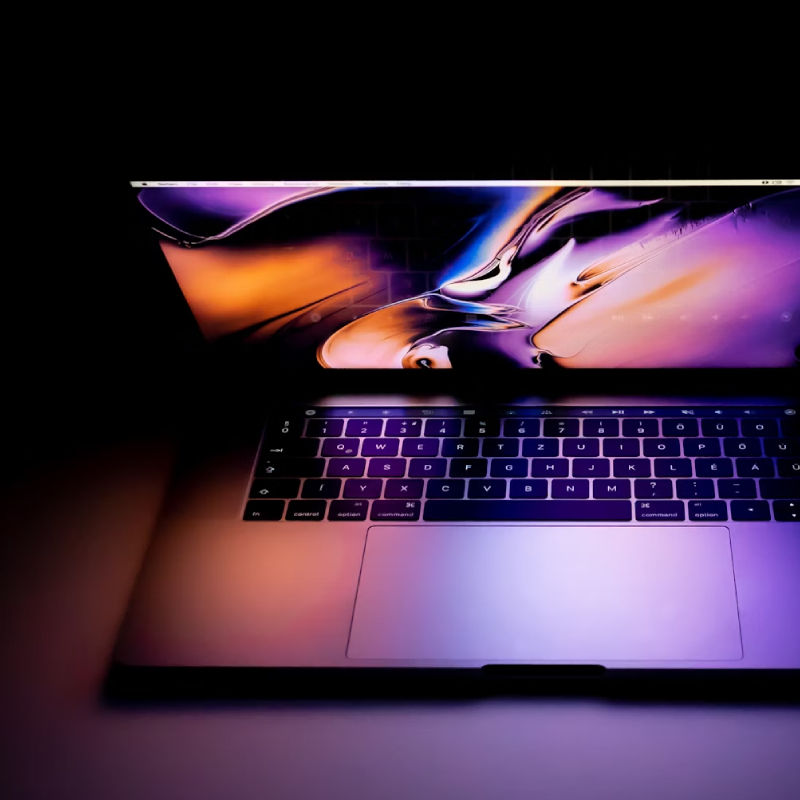Over the course of its life, the iPad has never been a game-changer like the iPhone or the iPod. Meant to be a supplementary device in your personal ecosystem of Apple products, the underrated iPad has undergone a drastic change in its vision.
With a new Apple event centred around the next generation of Apple’s tablets upon us, it is the perfect time to delve into the history of iPads, in chronological order of release.
The original iPad came to the world in 2010 and at the time, everyone considered it an iPhone with a larger display. While the concept behind the iPad was sound, it was limited by the iOS ecosystem. Over the years, Apple repurposed the iPad into a modern computing device trying to please students, professionals, creators and casual users.
The iPad division eventually got a dedicated iPadOS platform that addressed all the concerns related to the larger screen. Unlike the recent versions of iOS, it knows how to make optimal use of the extra screen space. With features like Stage Manager, Center Stage and advanced Handoff, the iPad is now more utilitarian than ever. Has it become a laptop killer? That’s a discussion for another day.
Additionally, the iPad has experienced multiple screen sizes over the years. On one hand, you have the gigantic 12.9-inch iPad Pro that delivers a MacBook experience, on the other, there’s the highly versatile iPad Mini with its compact dimensions. Surprisingly, we haven’t seen an iPad with a foldable screen (yet)!
While the dream of an iPad with a foldable screen lingers on, we take a tour through the iPad’s glorious history and explore all the iPads in their chronological order of release.

The Evolution Of The Mac: All Apple MacBook Versions In Chronological Order

All iPhones In Order Of Release: A Timeline Of Apple’s Bestselling Product
All iPads in their chronological order of release
iPad (1st Gen)
Launched in: March 2010
This is the genesis! The first iPad set the course for Apple’s vision of a larger mobile device designed for productivity over everything else. It featured a large 9.7-inch IPS LCD touchscreen display and ran the same iOS as the latest iPhone of that year.
Featuring the Apple A4 chipset, it could run most of the iPhone apps and games on a larger scale (except for the calculator app), kickstarting the tablet revolution. While the first iPad missed out on front and rear cameras, it came with a 3.5mm audio connector as standard. For charging and data transfer, the iPad had Apple’s proprietary 30-pin connector.
iPad (2nd Gen)
Launched in: March 2011
The second generation of the iPad introduced major refinements to the design, practicality and performance. Instead of the curved rear panel, the iPad 2 featured a flat back for easy gripping. It got a powerful dual-core A5 chip that took care of demanding apps and games on the iOS platform.
Apple also gave the iPad 2 a front VGA camera and a 0.7-megapixel rear camera that could record videos. The battery capacity was also increased to deliver better stamina.
iPad (3rd Gen)
Launched in: March 2012
The iPad 3 came a year after the iPad 2 with a beefier Apple A5X chipset from the iPhone 5S. While it kept the design unchanged, this new iPad saw an upgraded Retina display and a 5-megapixel rear camera that could record 1080p videos. It also supported Siri’s new voice dictation feature and Apple added the option to connect it to cellular networks utilising 4G technology.
However, the iPad 3 was only on sale for seven months before it was discontinued.
iPad (4th Gen)
Launched in: October 2012
With the iPad 4, Apple got rid of the 30-pin connector and switched to the newer Lightning connector. This allowed the iPad 4 to be compatible with iPhone 6 charging cables. The new A6X chipset also allowed the iPad 4 to offer an incredible boost in raw performance, which was great for gaming and multitasking. The front camera also got a superior 1.2-megapixel front camera for improved picture quality while doing FaceTime calls.
iPad Mini (1st Gen)
Launched in: November 2012
It was in 2012 when Apple decided to make the iPad a lot more accessible by shrinking its 9.7-inch display to a compact 7.9-inch panel. Sadly, Apple gave the first iPad Mini dated internal specifications of the iPad 2. The A5 chip was underpowered and came with less RAM, lacked a Retina display and fewer years of software support.
Nonetheless, the iPad Mini kickstarted the trend of compact tablets that found use in several key sectors like aviation, business, the corporate world and more.
iPad Air (1st Gen)
Launched in: October 2013
The iPad Air modernised the classic iPad with a thinner profile that made it more portable than its predecessor. The slimmer chassis also allowed for a lower weight, thereby making it easier to use. Although the iPad Air missed out on the fingerprint scanner for security, it made up for it with a 1.2-megapixel front camera recording videos in 720p resolution and a new 5-megapixel iSight rear camera with CMOS IR filter.
The new A7 chip along with M7 Motion coprocessor made the iPad Air one of the fastest tablets of its time.
iPad Mini (2nd Gen)
Launched in: November 2013
After an uninspiring first outing, the iPad Air got a major performance overdose with the second generation model. Popularly known as the iPad Mini 2, it introduced the sharper and better-looking Retina display on Apple’s most compact iPad. The new A7 chip addressed all the complaints regarding the performance, thereby making it a great deal for most iPad users looking for a compact tablet.
Other highlights include a 5-megapixel rear camera, a 1.2-megapixel front camera and up to 10 hours of battery life.
iPad Air (2nd Gen)
Launched in: October 2014
The 2nd Gen iPad Air shaved more of its heft and was hailed as the slimmest tablet from Apple at the time. Other than the reduced dimensions, the iPad Air 2 got the faster Apple A8X chipset for taking care of all the performance needs. It also became the first iPad to get the Touch ID fingerprint scanner on its home button and got rid of the mute switch. The rear camera was given a new 8-megapixel Sony sensor with burst mode capabilities for better photography.
The Air 2 was also the first iPad to get the trendy Gold colourway.
iPad Mini (3rd Gen)
Launched in: October 2014
Apple got lazy with the iPad Mini 3 and gave it the least number of upgrades. The only major change with the iPad Mini 3 was the presence of the Touch ID fingerprint sensor for superior biometric verification. Other than the new Gold colourway, the iPad Mini reused the older A7 chip from its predecessor. Even the cameras were left unchanged.
iPad Mini (4th Gen)
Launched in: September 2015
The iPad Mini 4 addressed all the complaints of its predecessor by revising its design, introducing a new laminated display (same as the iPad Air 2) and upgrading to the A8 chipset from the iPhone 6. It also got an 8-megapixel rear camera and a 1.2-megapixel front camera from the iPad Air 2. The Touch ID sensor was retained from its predecessor.
iPad Pro (1st Gen)
Launched in: November 2015
An iPad for the professionals! The iPad Pro was designed for creators and users who needed a lot more processing power and wider capabilities on their tablet devices. Slotting in as the new flagship iPad, it came in a regular 9.7-inch size and a larger 12.9-inch size. Featuring the powerful A9X chipset, the iPad Pro could perform better at raw processing. The 12.9-inch variant also came with 2GB RAM, which was the highest that an iPad ever got.
To lure creators, Apple announced the Apple Pencil (1st Gen) stylus for taking notes and making illustrations. The display also received the iPhone’s True Tone feature for adjusting the white balance.
iPad (5th Gen)
Launched in: March 2017
While the iPad was on an evolutionary trajectory, Apple wanted to offer a model that still catered to students, homes and everyone who just wanted a simple iPad. The result was the iPad 5th Gen in 2017, a budget-friendly iPad that offered a large 9.7-inch display and the latest A9 chipset.
Unlike the iPad Pro and iPad Mini, this base iPad still stuck with an unlaminated display and didn’t support the Apple Pencil. Although it was basic, it was what helped Apple move numbers in the affordable segments of the tablet market.
iPad Pro (2nd Gen)
Launched in: June 2017
With the second-generation iPad Pro, Apple heard its customers and gave them the upgrades they demanded. The new A10X Fusion chip promised a greater increase in raw performance, which was crucial to the iPad Pro’s intentions of being a laptop replacement.
Apple also introduced a higher refresh rate 120Hz display on both the 10.5-inch and 12.9-inch variants of the iPad Pro, allowing for smoother animations and better experiences while using the stylus. The rear camera was upgraded to a 12-megapixel sensor and was accompanied by a True-Tone LED flash. Meanwhile, the front camera received a 7-megapixel image sensor.
Apple also upgraded the Lightning port to USB-3.0 speeds for faster data transfer.
iPad (6th Gen)
Launched in: March 2018
A year after the 2nd Gen iPad Pro, Apple released the successor to the basic iPad model in its lineup. The 6th Gen iPad was largely similar to its predecessor, save for a few changes. Apple wanted to make this tablet suitable for school children and hence, added the support for the Apple Pencil stylus. The A9 chip was also phased out in favour of the faster A10 Fusion chip from the iPhone 7.
iPad Pro (3rd Gen)
Launched in: October 2018
The iPad Pro 3 marked a paradigm shift for the entire iPad lineup. Gone were those chunky vintage bezels of the past and in its place, Apple opted for slimmer and uniform display bezels. This let go of the Home button and its Touch ID sensor but Apple compensated for it by integrating the Face ID sensor from the iPhone X. The camera sensors were also upgraded to improve the image quality. While the 120Hz refresh rate was retained, Apple upgraded the chipset to its newest A12X Bionic for faster performance. A maximum storage of 1TB was also made available.
This generation of the iPad Pro also tagged along a new Apple Pencil (2nd Gen) that could magnetically clip onto the side of the device and charge itself. A new Smart Folio Keyboard offered a detachable keyboard for those wanting to use it as a laptop. Apple also phased out the Lightning port in favour of a USB-C port for greater compatibility with mobile devices.
iPad Mini (5th Gen)
Launched in: March 2019
For 2019, Apple began the year with the fifth generation of the iPad Mini. While the design remained identical to the outgoing model, the iPad Mini came with a new LCD display that supported True Tone for accurate white balance and DCI-P3 colour gamut. The Apple A12 Bionic chip from the iPhone XS made its way for duty on the iPad Mini and the same can be said for the 7-megapixel front camera.
Apart from the integrated Touch ID sensor in the Home button, Apple also included support for the first-generation Apple Pencil (since this iPad Mini still had a Lightning port).
iPad Air (3rd Gen)
Launched in: March 2019
Alongside the iPad Mini, Apple also released the iPad Air 3rd Gen – a revival of the long-dead iPad Air series. Unlike its predecessor, the iPad Mini 3rd Gen was supposed to bridge the gap between the base iPad and the pricey iPad Pro. Hence, Apple gave it the premium slim chassis from the 2017 iPad Pro with a laminated LCD display supporting True Tone and DCI-P3 colour gamut.
Performance was taken care of by the Apple A12 Bionic chipset and the compatibility with the Apple Pencil 1st Gen as well as the Folio Keyboard case made it useful as a PC replacement. Sadly, this one also retained the Lightning port for charging and data transfer.
iPad (7th Gen)
Launched in: September 2019
Apple’s iPad division ended 2019 with the seventh generation iPad. With the standard model, Apple continued its pursuit of appealing to students and casual users seeking an affordable computing device. Compared to its predecessor, the display dimensions were increased from 9.7 inches to 10.2 inches, thereby matching the iPad Air. The display panel was still not laminated.
Using the new dimensions made it compatible with the older iPad Pro’s smart accessories, including the older Apple Pencil. Sadly, Apple didn’t upgrade the A10 Fusion chip and as a result, the iPad 7th Gen didn’t sell in great numbers.
iPad Pro (4th Gen)
Launched in: March 2020
As the world went into the pandemic-induced lockdown, Apple released the fourth-generation iPad Pro. After the mega design overhaul in 2018, the new iPad Pro got a beefier Apple A12Z Bionic chipset promising better GPU performance than the regular A12 chipset. While the boxy design of its predecessor was left untouched, Apple revised the rear camera system, offering a 12-megapixel wide sensor, a 10-megapixel ultra-wide sensor and a dedicated LiDAR sensor for AR applications.
A new Magic Keyboard was introduced as an accessory that added a keyboard and a Mac-styled trackpad.
iPad Air (4th Gen)
Launched in: September 2020
The iPad Air got a major design overhaul in 2020 and at first glance, it looked like the compact 10.9-inch version of the iPad Pro 3rd Gen. It had the same boxy chassis, uniform yet slimmer bezels and a USB-C port for data transfer and charging. While it missed out on the Face ID system, Apple integrated the Touch ID fingerprint scanner in the power button. The Apple A14 Bionic chip from the iPhone 12 took care of performance. This iPad Air was also compatible with the accessories of the iPad Pro.
iPad (8th Gen)
Launched in: September 2020
To keep the base iPad relevant, Apple introduced a newer eighth-generation iPad for the masses. The new model was identical to its predecessor except for the chipset. Apple finally ditched the A10 Fusion chip in favour of the Apple A12 Bionic chipset, offering faster performance.
iPad Pro (5th Gen)
Launched in: April 2021
The sole reason why the fifth-generation iPad Pro made headlines was its chipset. Apple ditched its mobile-centric A series chips in favour of the new M1 chip that debuted on the MacBook range. The M1 chip gave the iPad Pro unparalleled processing power for any tablet of its time. Along with mmWave 5G connectivity, the M1 iPad Pro was a powerhouse for creators and professionals.
While the 11-inch variant retained the LCD display panel, the 12.9-inch variant boasted a mini LED HDR display with peak brightness rated at 1,600 nits. The USB-C port also got support for faster USB-4 and Thunderbolt 3 standards.
iPad Mini (6th Gen)
Launched in: September 2021
The iPad Mini got the modern treatment in 2021 with the sixth generation model. It was essentially a shrunken version of the iPad Air 4th Gen in terms of design, including the Touch ID sensor embedded into the power button. Apple gave it the A15 Bionic chip from the iPhone 13, thereby offering enhanced performance for all the iPad functionalities. A 12-megapixel front camera took care of FaceTime calls whereas another 12-megapixel rear camera covered photography and scanning needs.
While the presence of a USB-C charging port and support for the 2nd Gen Apple Pencil were admired, the small dimensions meant no support for the Apple Magic Keyboard.
iPad (9th Gen)
Launched in: September 2021
For 2021 and beyond, Apple updated the base iPad with a brand new chipset and a nicer front camera. Retaining the outdated Home button-based design of its predecessors, the iPad 9th Gen makes use of the A13 Bionic chip that promises greater performance than its predecessor.
Since video calls were a crucial factor in buying a tablet in 2021, Apple upgraded the front camera with a new 12-megapixel sensor that supported Apple’s Center Stage feature. The rest of the package was left unchanged.
iPad Air (5th Gen)
Launched in: March 2022
For its fifth generation, Apple updated the iPad Air with the M1 chip from the iPad Pro. The M1 chip opened up greater performance potential and made Apple’s latest chipset more accessible. The rest of the package, however, was largely kept unchanged from its predecessor.
iPad Pro (6th Gen)
Launched in: October 2022
The M1 iPad Pro was updated in late 2022 with Apple’s newer M2 chipset that debuted on the Mac range. The refined 5nm chip offered a minor boost in raw performance, thereby helping the iPad Pro extend the lead over its rivals. Those using it with the Apple Pencil 2nd Gen also got the hover function that showed a preview of where the tip would touch before you started scribbling. It also got support for support for Wi-Fi 6E, Bluetooth 5.3 and Smart HDR 4.
iPad (10th Gen)
Launched in: September 2022
After being ignored for almost a decade, Apple updated the base iPad in 2022 with a modern design and support for newer accessories, except for the older Apple Pencil 1st Gen. The iPad 10th Gen was based on the iPhone 12’s A14 Bionic chipset that gave it a decent grunt to handle basic tasks and games with ease. The 10.9-inch LCD display has uniformly slim bezels but it still lacks lamination.
The USB-C connector allows you to connect any universal charger as well as SSD storage drives. It also became the first iPad to feature a horizontally mounted front camera for video calls and webcam.
iPad Pro (7th Gen)
Released in: May 2024
With no new iPads released in 2023, Apple returns to the tablet segment with an all-new OLED iPad Pro. While the details are still kept under the cover, rumours suggest some big upgrades coming to Apple’s flagship tablets. The iPad Pro 7th Gen is rumoured to feature an all-new M4 chip specialising in AI processing, new high refresh rate OLED panels for the display and better battery life.
A new Apple Pencil is also expected to debut exclusively for these premium iPad models.
iPad Air (6th Gen)
Released in: May 2024

The iPad Air is also due for an upgrade and based on what we have heard so far, here’s what to expect. The iPad Air could get the mighty M3 chip from the latest MacBook Air. While the 10.9-inch variant is likely to stay largely unchanged, a new 12.9-inch iPad Air is expected to expand the range. Apple is even rumoured to give this 12.9-inch variant the Mini LED display panels from the outgoing iPad Pro.
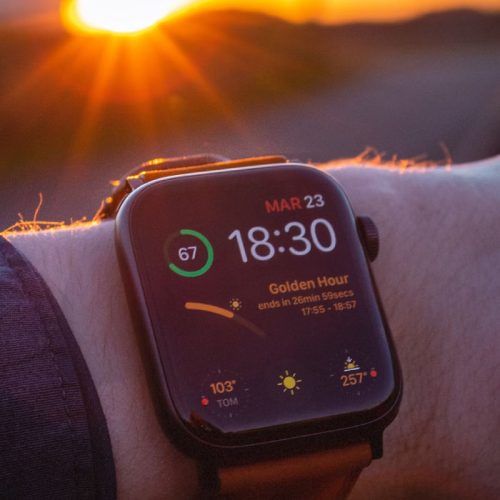
Will The Apple Watch Series X Be A Gamechanger? All The Rumoured Features That Indicate So
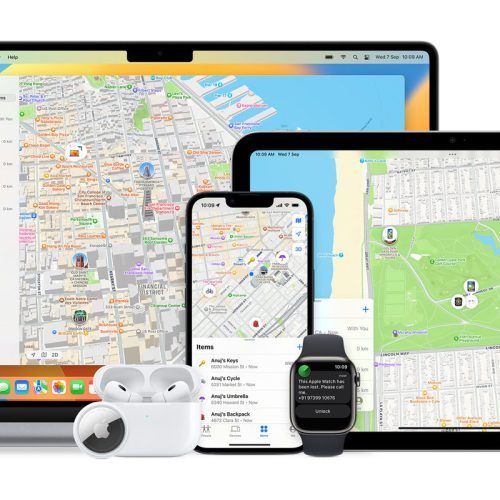
Android Find My Device vs Apple Find My: Which Is The Better Gadget Tracking Ecosystem?
(Hero and Featured Image Credits: Courtesy Jackson Hayes via Unsplash)
Frequently Asked Questions (FAQs)
– Which is the latest iPad launching at the Apple Event 2024?
The iPad Pro 7th Gen will be the latest iPad launching at the Apple Event 2024.
Amritanshu Mukherjee



